Farewell Brandywell slope! New sporting era begins
- Published
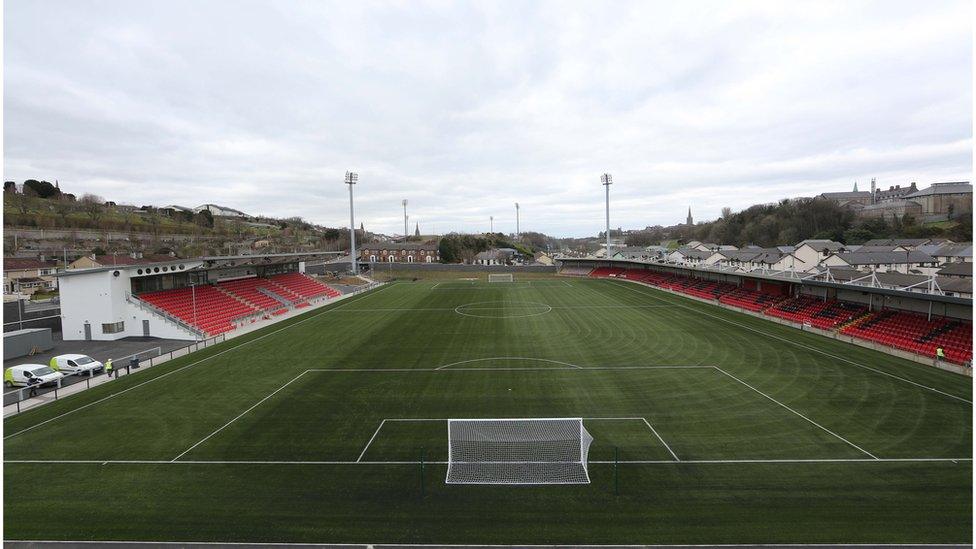
The redevelopment work at Brandywell Stadium means there is finally a level playing field at the ground
With the multimillion pound redevelopment of Brandywell Stadium, one of the grand old ground's quirks has been consigned to the footballing history books.
The Brandywell slope, it is said, could inspire victory or hasten defeat.
Whether schoolboy or superstar, even the very best were challenged by the on-field incline.
Upgrade works complete, there's now a level playing field at the Brandywell.
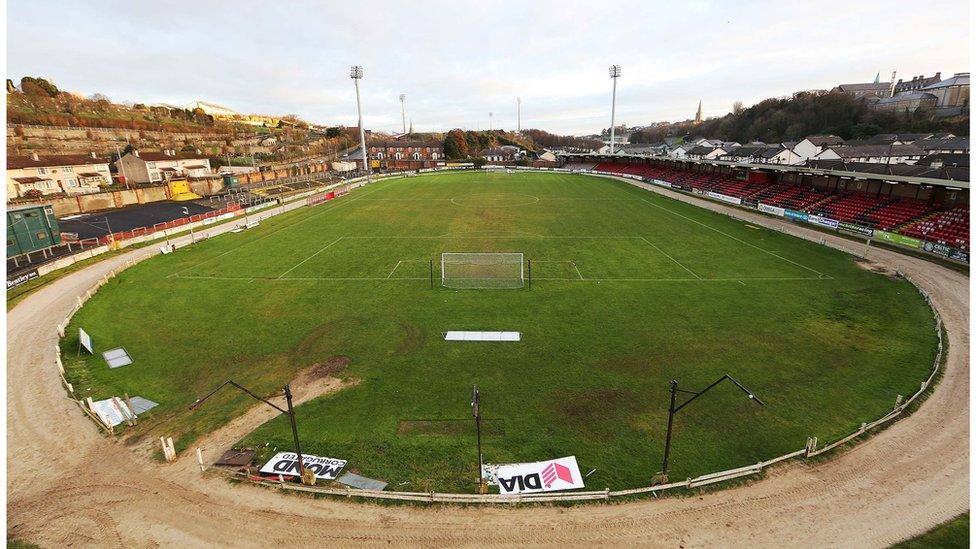
At one stage as steep as nine feet, the slope ran from the the Showgrounds to the Brandywell Road end of the ground, which has been home to Derry City FC since 1928
Now, as Derry City ready to face Limerick in the first game at the newly redeveloped Brandywell, the ground boasts a new synthetic and even playing surface.
'Hard for the young'
Former Northern Ireland international and Derry City striker Liam Coyle first encountered the slope in his schoolboy playing days.
In a glittering career with his home town club, in which he came to know its every rise and fall, Coyle scored more than 100 goals.

Former international striker Liam Coyle says players won't miss the Brandywell slope
"The slope was difficult, it was hard, especially when you were young.
"In later years, how much you noticed it depended on by how many we were winning or by how many we were getting beat."
The construction of the stadium's South End Stand at the ground in the late 1980s , as the Candystripes were entering a golden era on the field, reduced the slope to six feet.
Former club captain Coyle said the uneven pitch may have weighed more heavily on opposing teams.
"If you took the lead in the first half playing up the hill, you always had somewhere in the back of your mind that it was downhill second half - you always played that wee bit better.
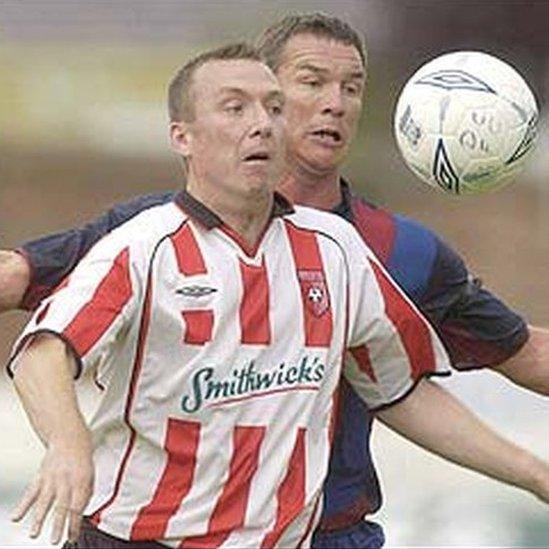
Liam Coyle in action against Barcelona at the Brandywell in 2003
"Managers like Jim McLaughlin or Felix Healy never sent us out to play in a certain way in regard to the slope but I know that opposing teams always wanted to play down the hill in the second half.
"Over the years I spoke to a few League of Ireland players about it - they always wanted to be playing downhill after half time.
"They felt if we were tiring we were easier to play against. It was the same for us, if I am honest, when I was captain, I always preferred us to be running downhill second half.
"If we got going, got the roar of the crowd behind us, and were going downhill... we were hard to beat."
The slope however, will not be missed, he says - and certainly not by the players.
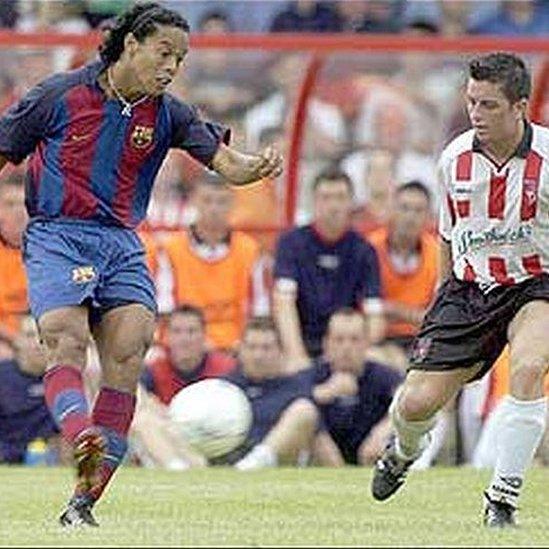
Even World Cup winners had to content with the Brandywell slope - Ronaldinho crosses the ball as Derry City defender Eddie McCallion closes in.
"They'll miss the grass, but they won't miss the slope," said the ex-international.
City's titles and triumphs have seen many a great footballing encounter on the Brandywell slope.
Benfica, Steaua Bucharest, Gothenborg, Vitesse Arnheim and Paris St Germain were among the continental visitors to Brandywell in European competitions.
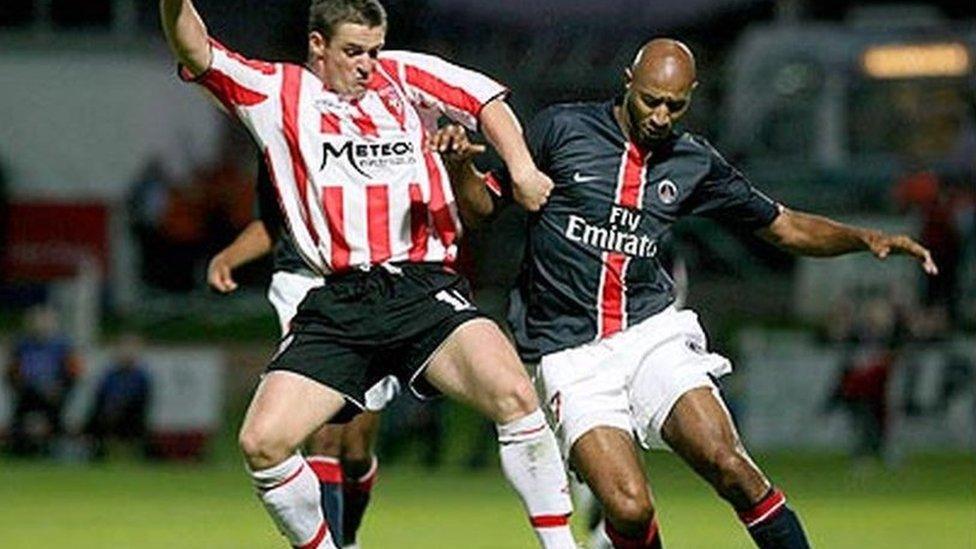
Paris Saint Germain were UEFA Cup visitors to the Brandywell in 2006
Glamour friendlies brought Barcelona, Real Madrid, Tottenham Hotspur and Manchester United to the famous old ground.
Where once sloped pitches were commonplace - as fans and players of Barnet, Oxford and Wycombe in England and Hibernian FC in Scotland will testify - they are now a sporting quirk disappearing at all levels of the game.
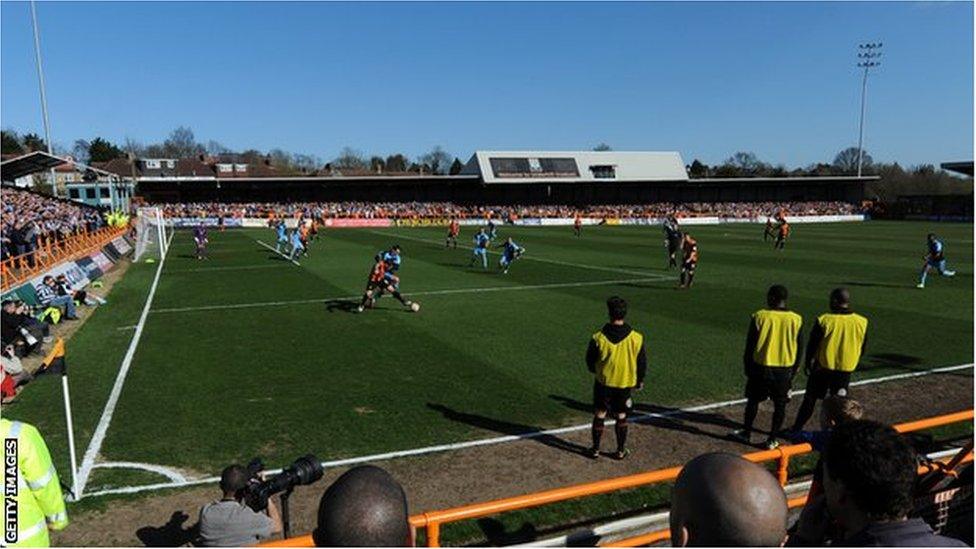
Barnet played at an uneven Underhill between 1907 and 2013
But there are plenty of sports grounds across the globe with their own idiosyncrasies...
It's not every football ground that's carved into a granite mountain face, like Braga Stadium, built for the 2004 European Championships and home to Portugal's Sporting Braga.
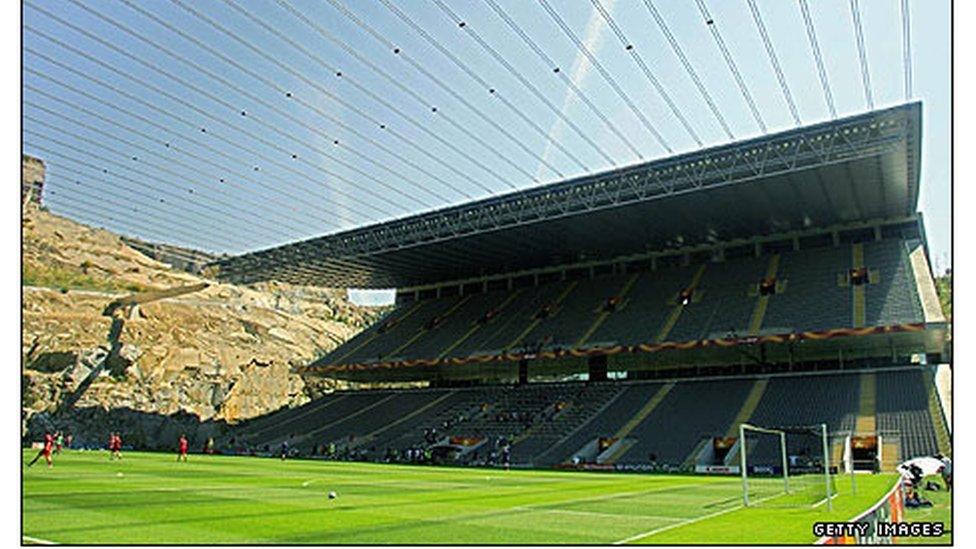
Braga's home stadium is carved off a quarry
Fenway Park, home of the Boston Red Sox, is the oldest venue in US Major League Baseball.
A national pastime and obsession, baseball is known for its traditions - and at Fenway Park that's particularly true.
The stadium still has a manual scoreboard which is operated inside a 37ft (11.2m) high wall called the "Green Monster".

The iconic "Green Monster" is Fenway's answer to Anfield's famous Kop
Thirteen years ago, there was a fond, if unplanned, farewell to one of cricket's most noted oddities, a huge lime tree in the middle of the St Lawrence Ground - home of Kent County Cricket Club

The tree loomed large over the outfield in happier days
The 200-year-old tree - inside the ground's boundary ropes - had been in ill health for a few years and was broken in half by a strong gust of wind in 2005.
Its mid-pitch presence meant the rules of the game had to be altered so that no batsman could be caught out if the ball rebounded off the tree.
Derry City play their first game at the £7m redeveloped ground when they face Limerick on 12 March.
- Published21 October 2014
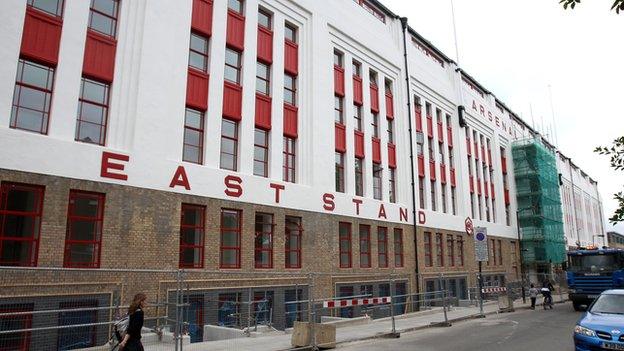
- Published25 October 2014
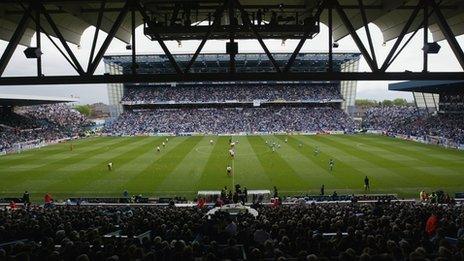
- Attribution
- Published2 January 2016